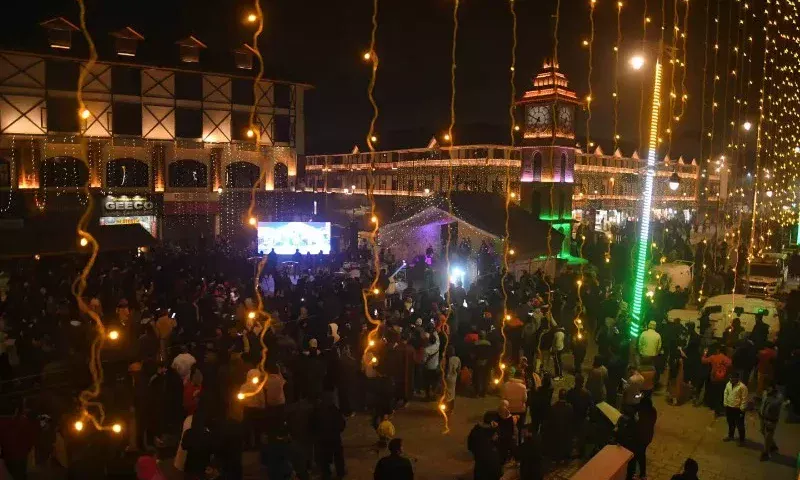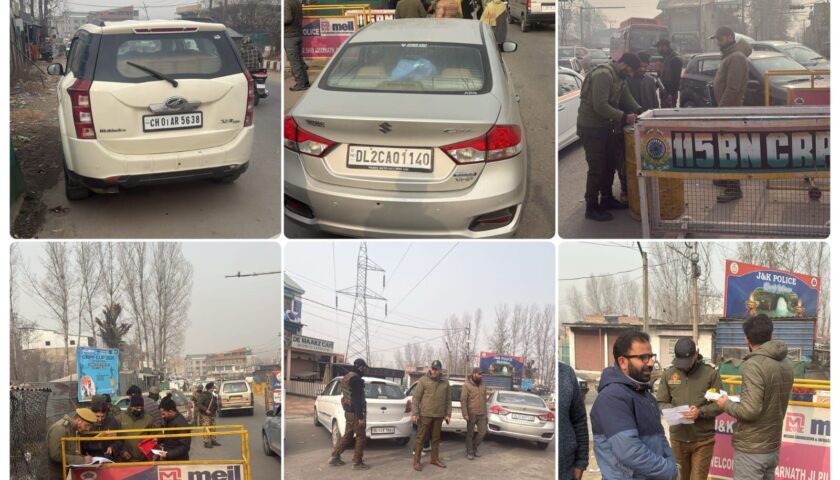On 27 January, the Army convoy took the route through Ganowpora village of Shopian, despite knowing that a large gathering was expected to pay tribute to a local boy working for Hizbul Mujahideen, who was killed.
In a statement to the Jammu and Kashmir Police on 28 January, the Indian Army claimed that the 27 January firing in Ganowpora village of Shopian district had followed the “standard operating procedure” of issuing verbal warnings and firing aerial shots before opening fire to “disperse the crowd”.
Three youths—Javed Ahmed Bhat (20), Suhail Javed Lone (24) and Rayees Ahmed Ganai (19)—died in the Army firing.
The Army also claimed that the convoy of 30 vehicles came under attack in which 11 vehicles were damaged and seven personnel injured. And firing was in “self-defence”. The GoC-in-C of Northern Command, Lt Genral Devaraj Anbu, said there was no need to hold a Court of Inquiry into the incident because everything was as per the SOP.
The Army was upset that the FIR registered by police at Keegam thana in Shopian mentioned the name of Major Aditya, when he was not “present at the spot”. By the “spot”, they refer to the so-called ‘fact’ that the Major was not near vehicles which came under attack, but was leading the convoy.
So why did the police record a FIR 26/2018 under Sections 302 (murder), 307 (attempt to murder) and 336 (endangering lives) of the RPC and mentioned Major Aditya as being present?
And is the Army being parsimonious with facts?
For instance, the first convoy to pass through the village was in the morning when a unit of 14 Rashtriya Rifles (RR) was passing through and demanded that posters paying tribute to a local militant, Firdous Ahmed Lone of Hizbul Mujahideen, be taken down.
Lone was killed on 24 January in the neighbouring Chaigund village. Villagers claimed that a black flag with ‘kalma’ was considered an ISIS flag and wanted it taken down too. After buntings and posters were torn off by the RR around 3.30pm, a convoy of 10 Garhwal Regiment led by one Major Aditya decided to take the same route through the village, knowing fully well that people were agitated because a large gathering was expected on 27 January for Firdous Ahmed Lone.
This act of 10 Garhwal Rifles precipitated matters and taking the convoy through the village in an already volatile situation was bound to provoke trouble.
While speaking in the assembly on 29 January, the Chief Minister disclosed that the police had advised the Army to avoid Ganowpora route. According to police sources, the advisory was issued in view of the tensions set off in the area following the killing of two Hizbul Mujahideen militants in a gun battle with the security forces in a neighbouring village on 24 January.
That the Army refused to heed the police advisory and took its convoy through the village twice in a day appears a deliberate act to provoke confrontation. And this seems to be in line with the current approach of the Indian Army, reiterated from time to time, as part of its “operation all out” that began last May, which has seen a spurt in killings by the Army.
The significant thing to note is that barring the BJP-RSS, all shades of political opinion cutting across divides has condemned the Army and its penchant for backing worst practices by its officers on the ground.
Refusal to order a ‘Court of Inquiry’ sends a clear signal to its personnel that they have nothing to fear and that Army leadership will stand by them no matter what. Indeed with the Army chief singing paeans to army officers who carry out “innovative” actions, the euphemism has come to represent approval for worst practices a la Major Gogoi of “human shield” fame.
What’s worse, as per a written submission by the Union Minister of Defence to the Rajya Sabha on 1 January 2018, out of 50 requests for sanction for prosecution of its personnel, in 47 cases sanction was denied, and in three cases, the matter is pending. Seventeen cases pertained to the killing of civilians, 16 to custodial killings, eight to custodial disappearance and four to alleged rape. What ought to be kept in mind is that these 50 are just a tip of the iceberg, where investigations by police resulted in filing of charge-sheet and sanction for prosecution is awaited.
Seen in this light, the hue and cry over registration of the FIR by the BJP-RSS and the Army hierarchy is misleading and a feint to divert attention from the truth of the incident. All that the FIR means is that even if the Army personnel are found to be at fault, nothing will come out of this exercise. Ganowpora, with the killing of three civilians, will join the list of cases where nothing happened after recording of the FIR. And thus, this game of smoke and mirrors will carry on.




